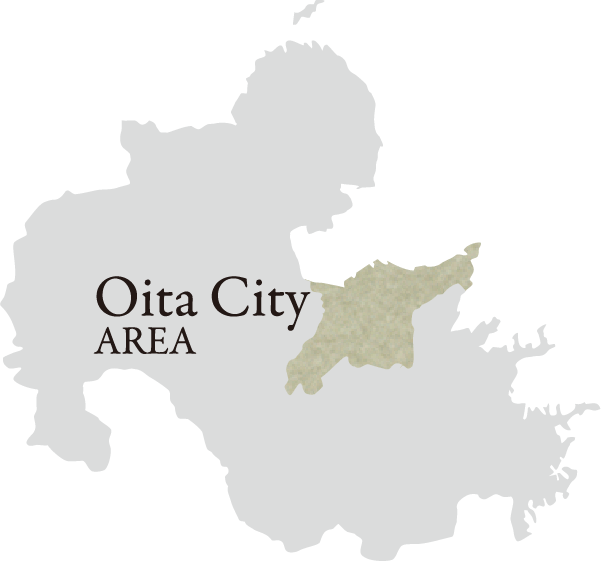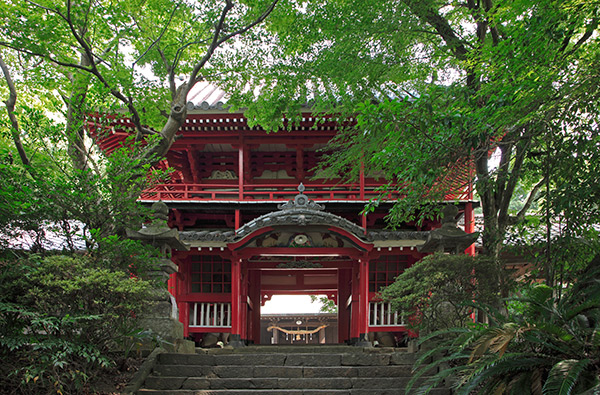

- City of Oita
- Nature
Ueno no Mori Forest
Photography/TAKEUCHI Yasunori
the Mesmerizing Nature and Culture
As if bordering the center of the City of Oita and southern Oita, there is a long stretch of hills. The altitude is about 70 meters. It looks like a dragon holding himself down. The head part of the dragon is the Ueno no Mori. The town of Uenogaoka spreads at about 30 meters of altitude, just a step lower, and where the tableland gets cut off at the riverbank of Oita River in Motomachi is called Ryugahana (nose of the dragon).
The center of Ueno no Mori is the Uenogaoka Cemetery Park, which is a city park. It has already been half a century since its opening. In addition to lush vegetation spread out about 9 hectares, you can see the fantastic views, so it is a place of relaxation not only for neighboring residents but also for the citizens of Oita in general.
However, the attraction of Uenogaoka is not only the forest. Including the city center, there is history, culture, and art that created the origin of Oita.
In visiting its history, first is the Daijinzuka Tumulus. It was made during the peak of the Tumulus period around 5th century, leaving the legend of Yuriwaka Daijin. On the rocks of Ryugasaki, there are Motomachi Magaibutsu (Stone Buddha), and Iwayaji Temple Magaibutsu nearby. Going up the hill, there is Enjuji Temple which is said to succeed Iwayaji Temple. Furthermore, Kongou Houkaiji Temple and others preserve many cultural properties. Going onto Shintoism, on the contrary of the Buddhism, there is Matsuzaka Shrine and Yasaka Shrine. In terms of politics, the ancient provincial office located in the southern foot of the mountain, Furugo, and the secondary office, as well as Uenoharu Residence (ruins of Nishiyama Castle) of the medieval regional lord Otomo overlook the city.
Into the modern days, academics and art were added to this. Oita Uenogaoka High School, which is the successor of Oita Junior High School, and Oita Economics College that became the Oita University School of Economics were there, and after their relocation, the Oita Prefectural College of Arts and Culture was established. Then inside the forest, they made the Oita Art Museum. This “forest” rivals, or even surpasses Ueno no Mori (where the Ueno Royal Museum is located) in Tokyo.
However, the forest full of nature has deteriorated over the years. The residents who could not help themselves but felt they had to do something about it stood up and started a volunteer organization to protect the forest, to clean and prune the trees for maintenance purposes. There are also people standing up for the cultural side. There are individuals and groups promoting the forest of art, beginning some actions. The power of community is now trying to protect the sanctuary.

Yasaka Shrine.

